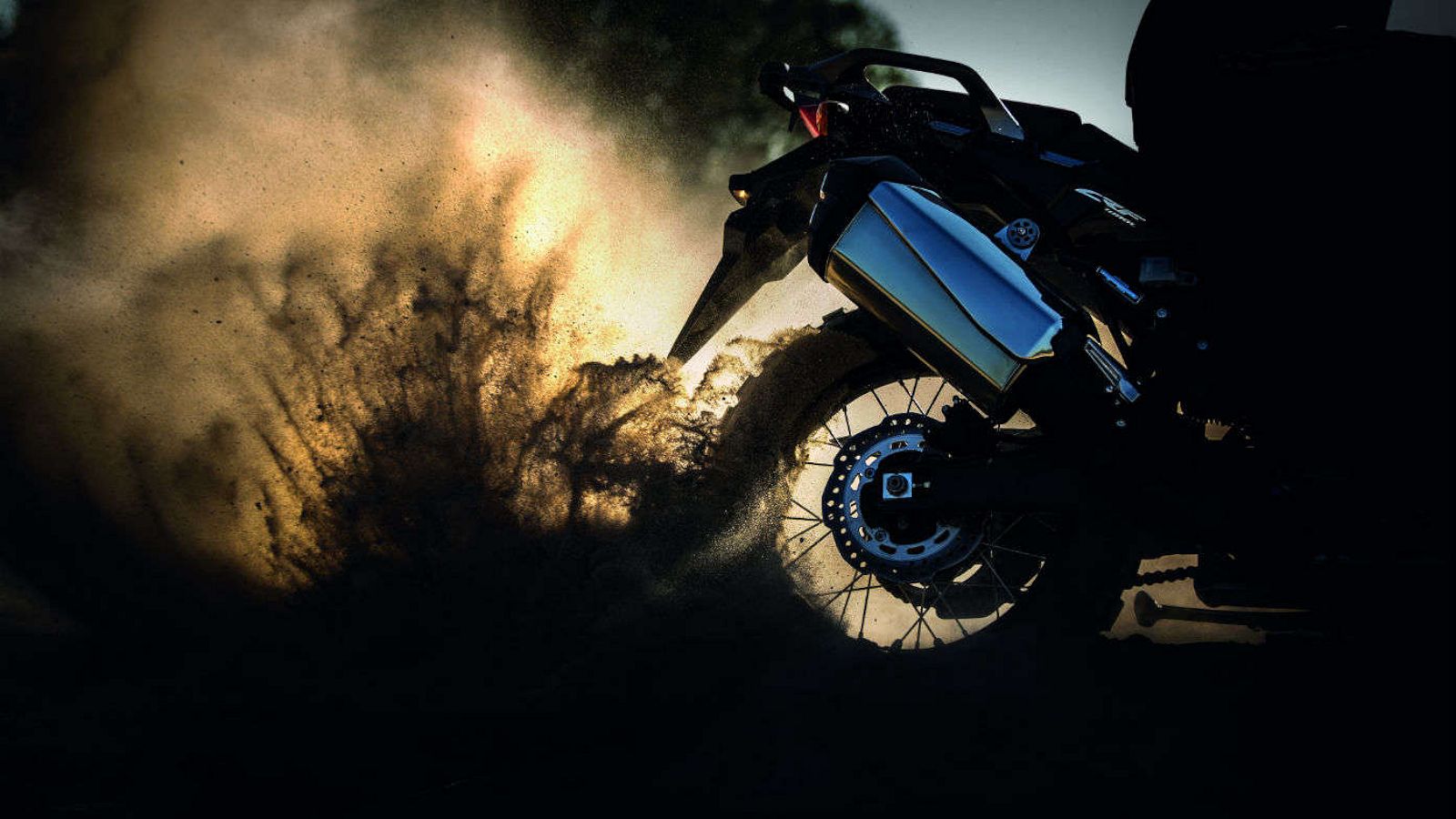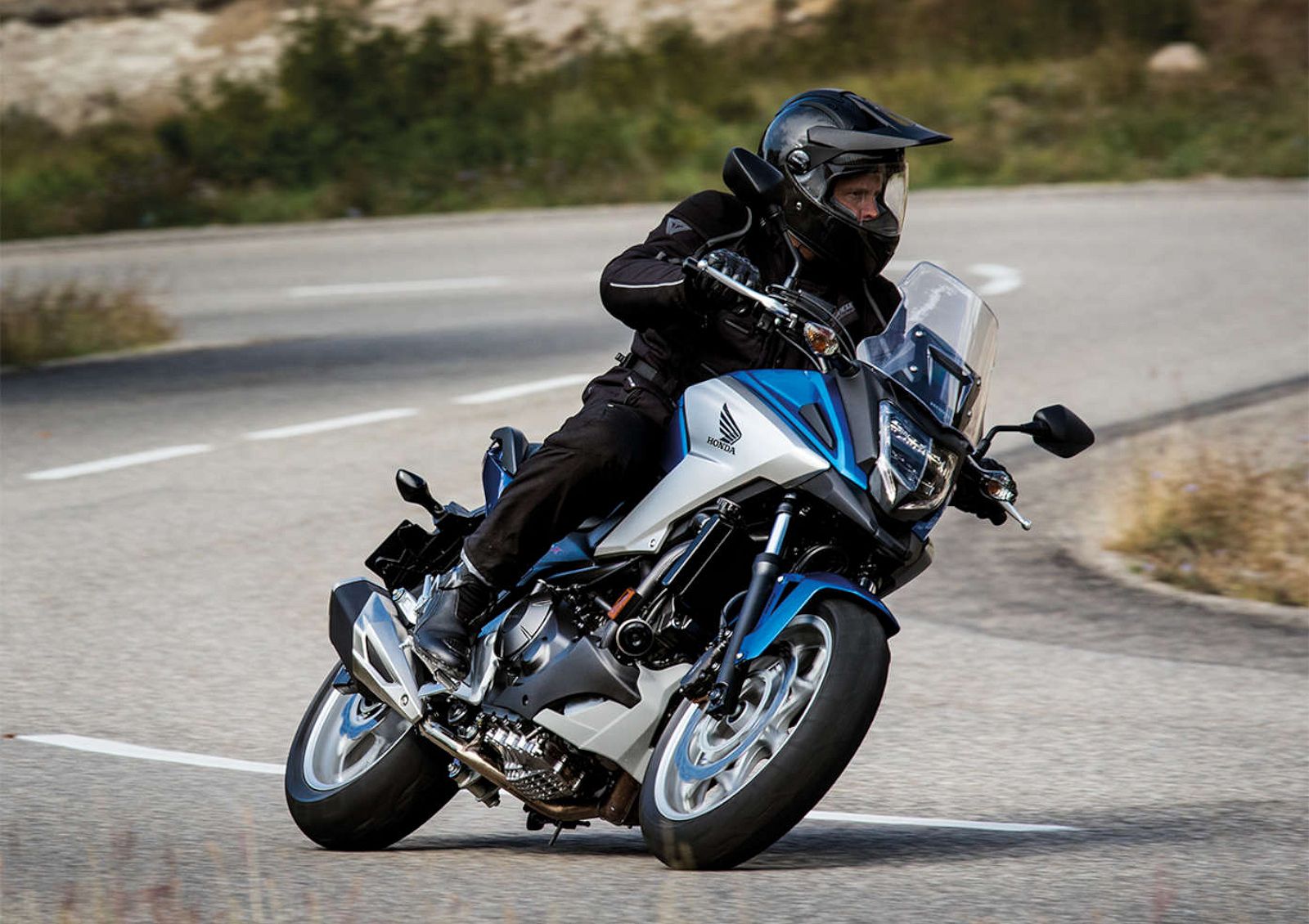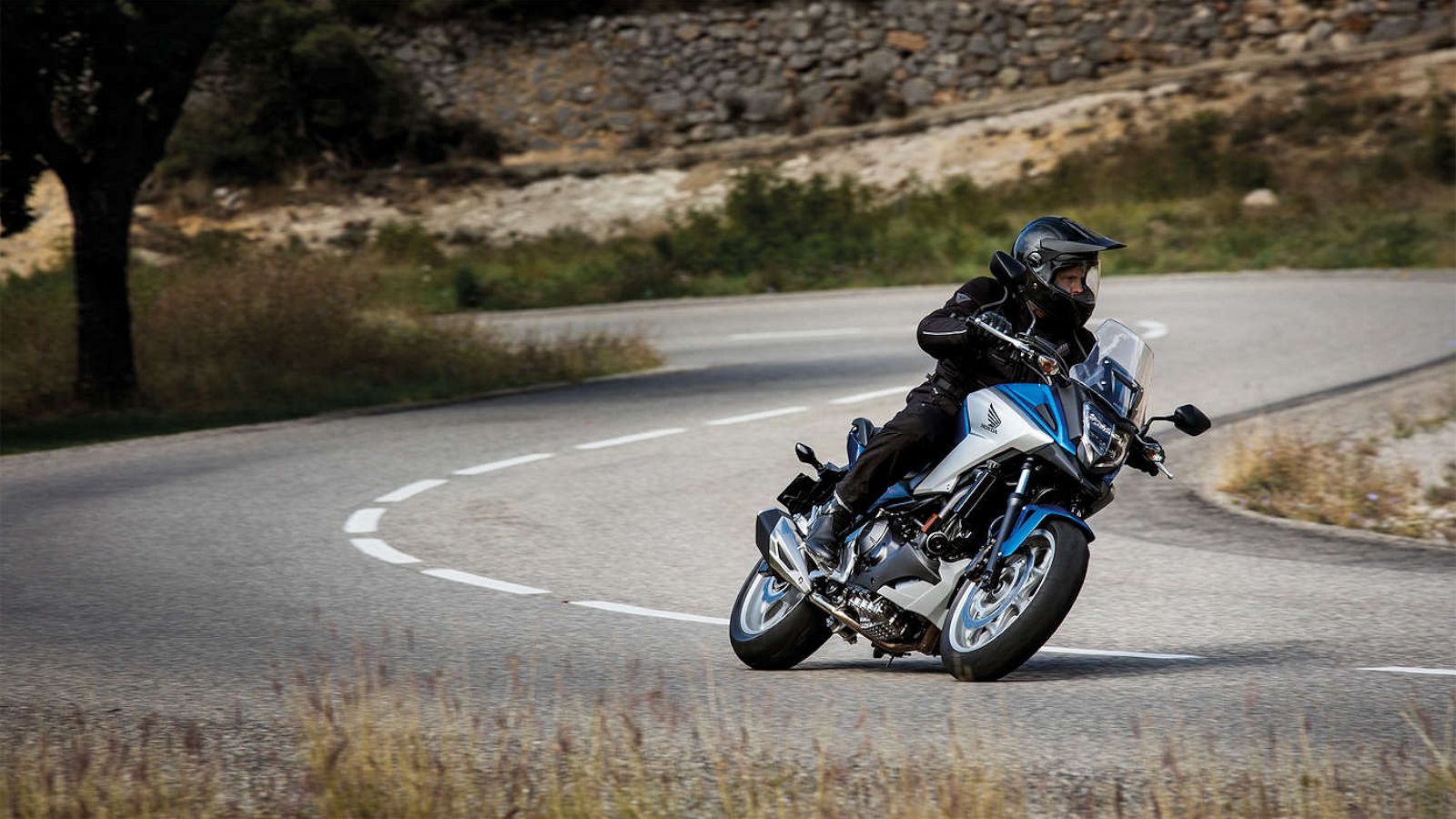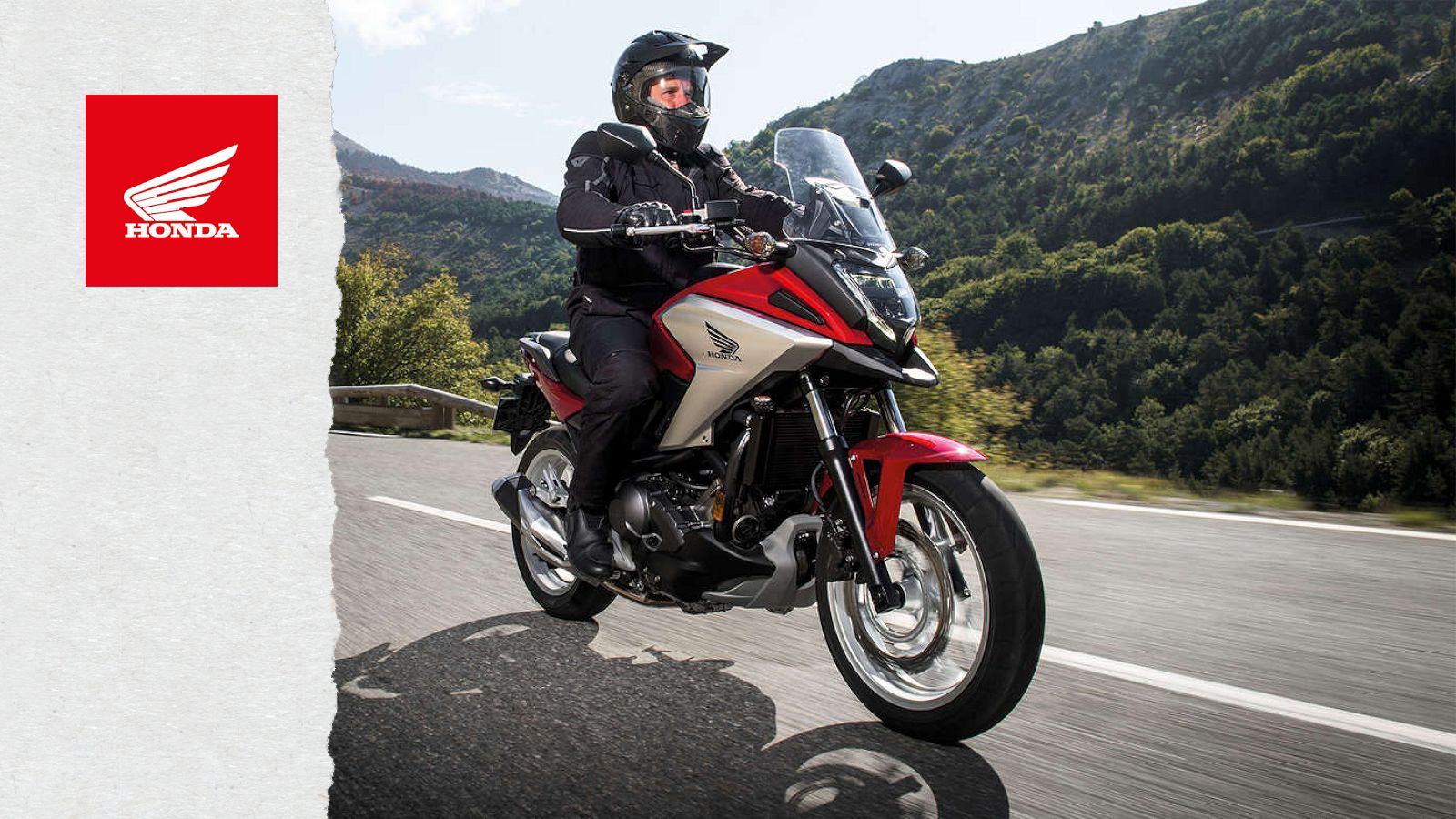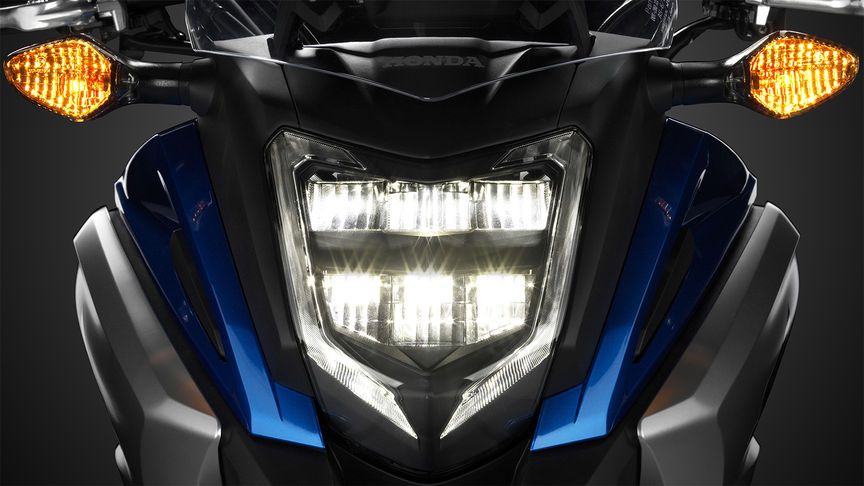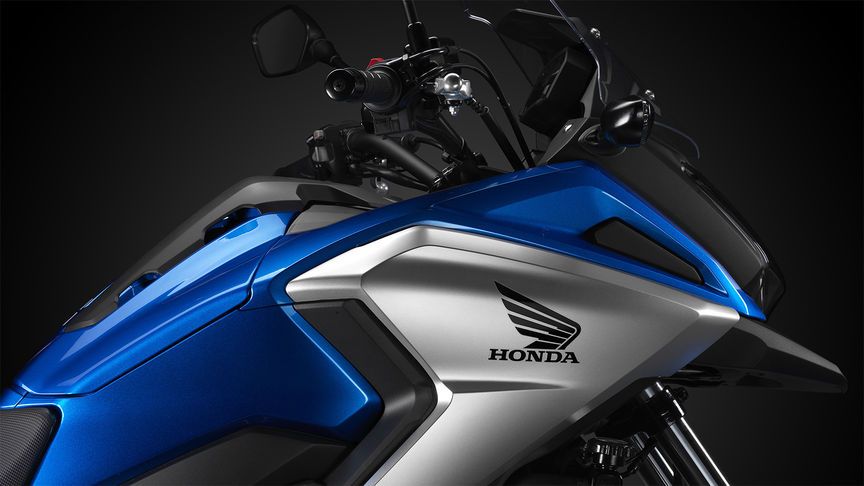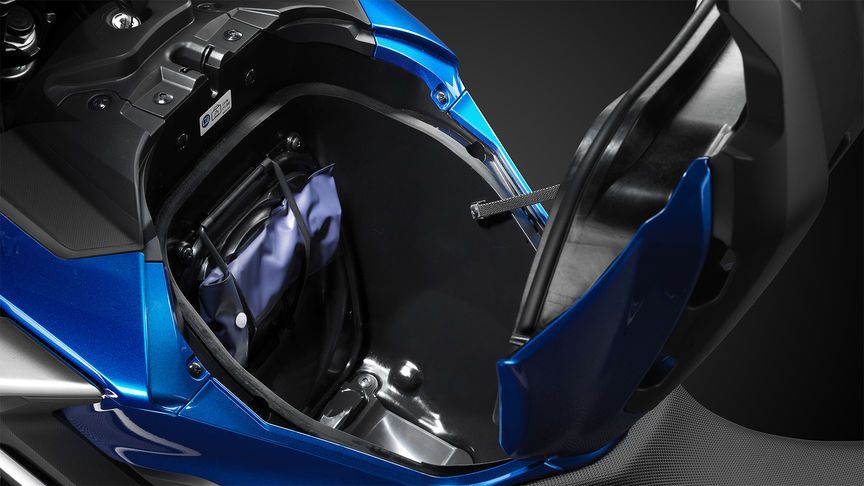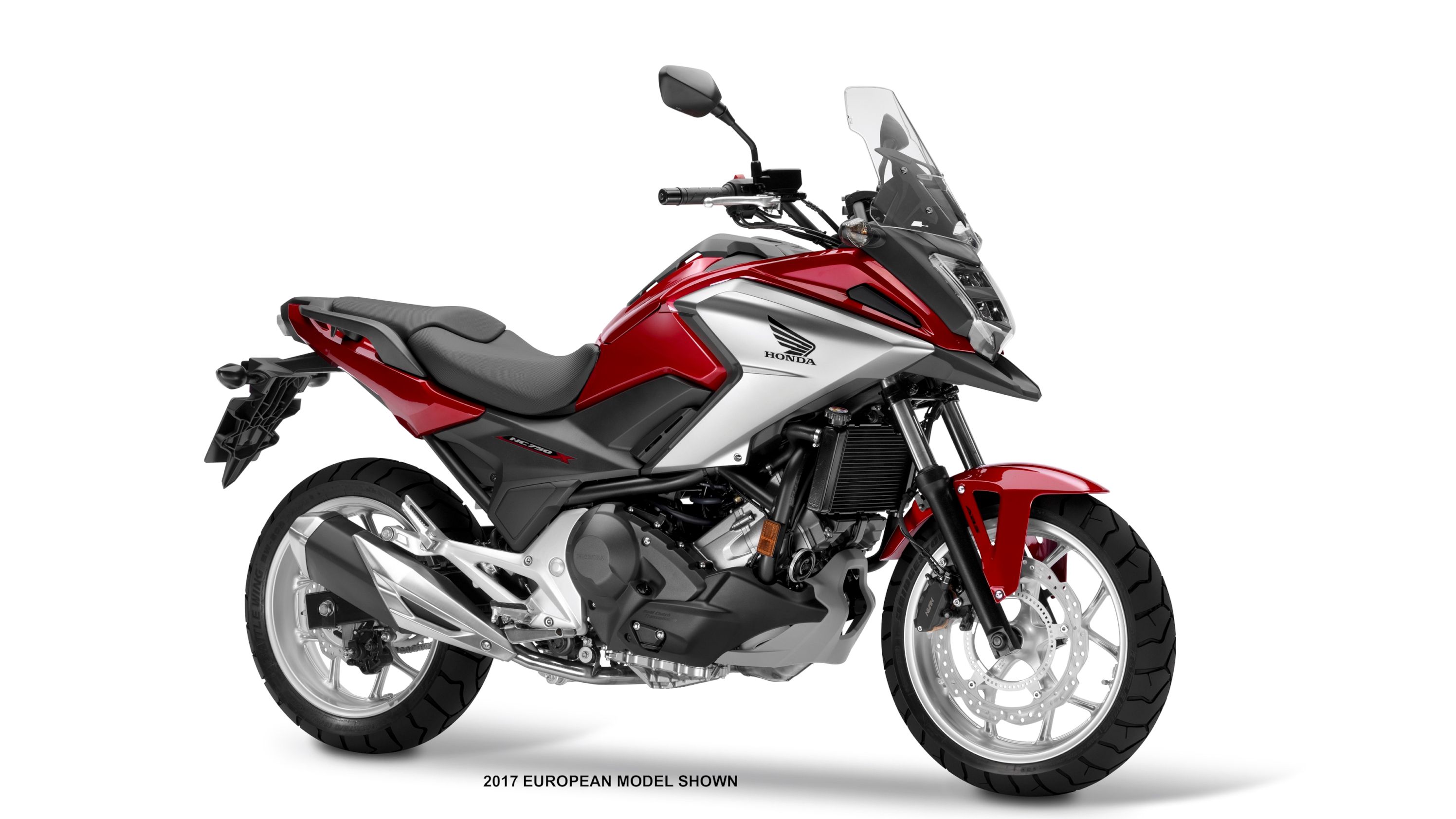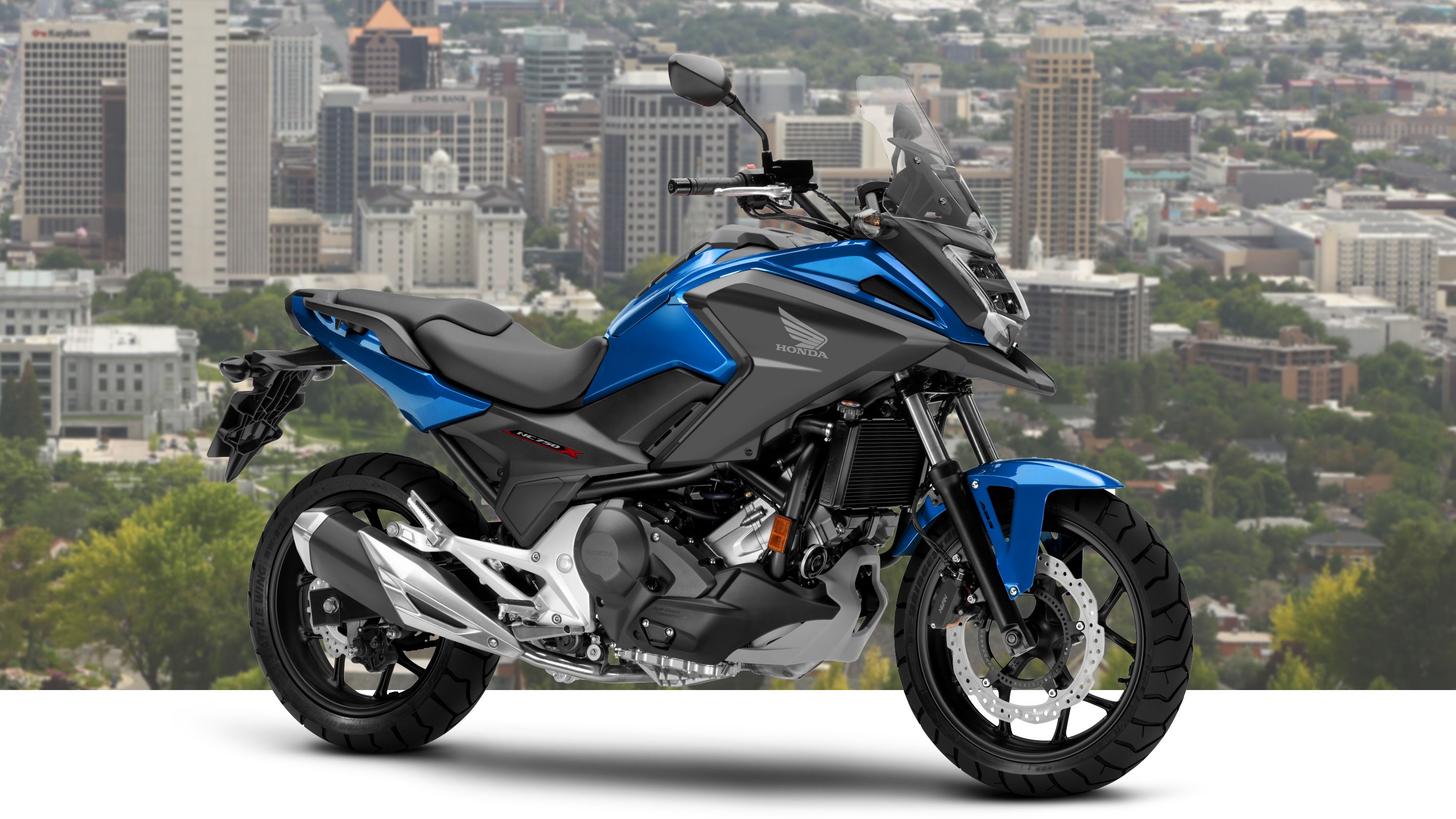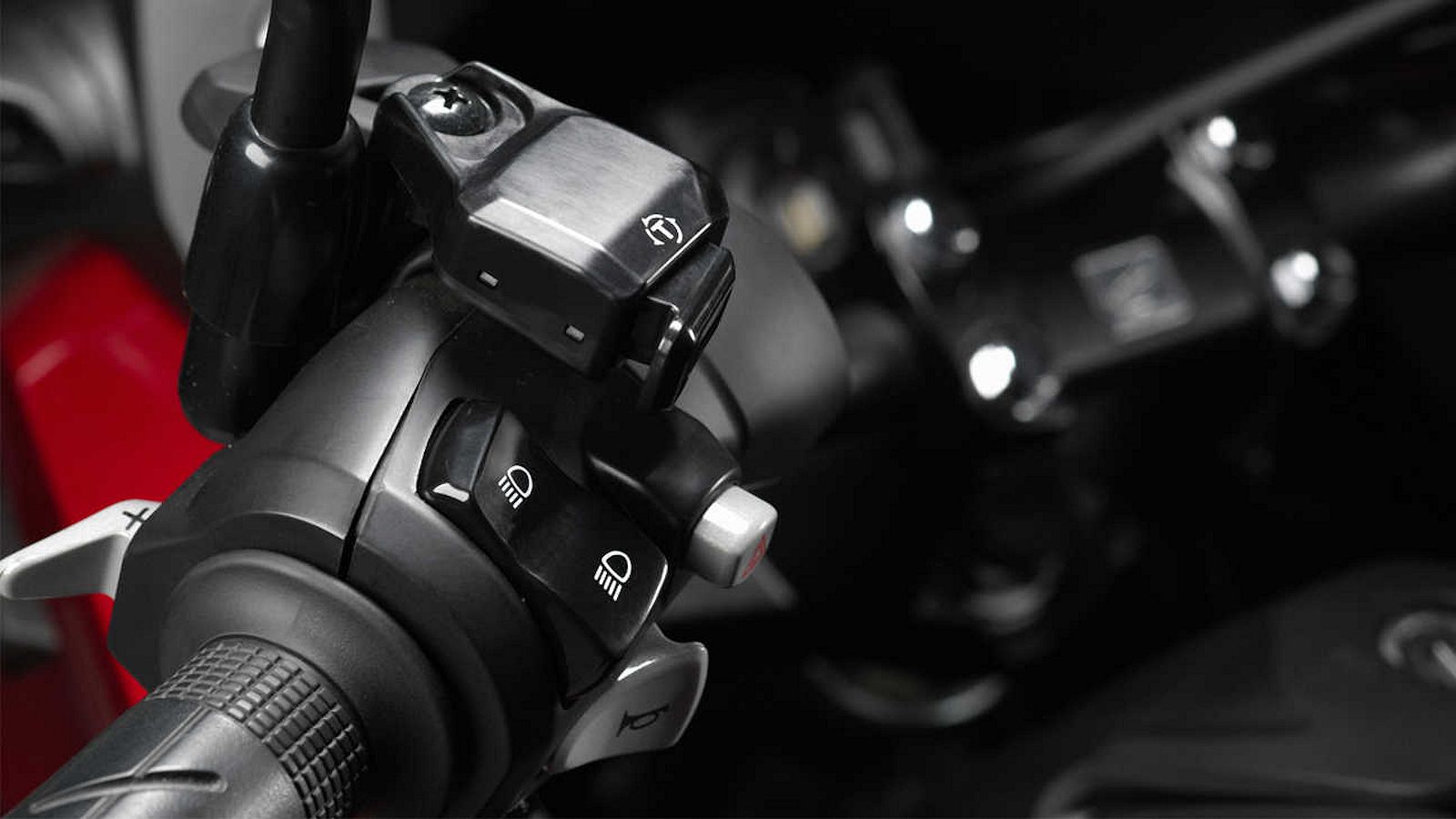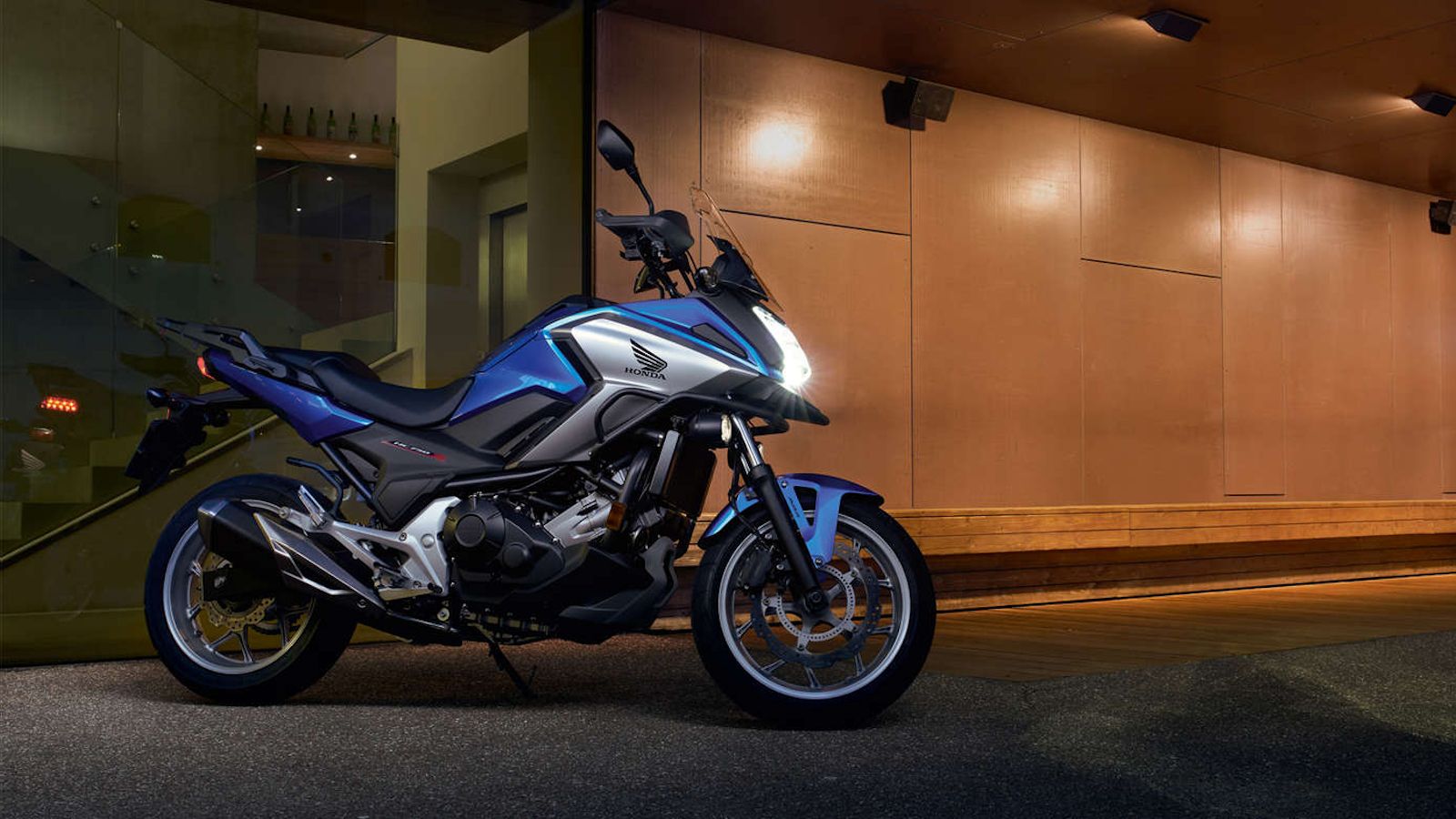Honda introduced the NC750X to the U.S. market in 2018 to solidify its position in the adventure-commuter sector. Like its predecessor, the NC700X, the new sled is built for comfortable riding with a capacity for touring. The new engine lends it a sportier attitude with 54 horsepower on tap and a two-level torque control to help you keep it under control.
2018 - 2020 Honda NC750X
- Make: Array
- Model: 2018 - 2020 Honda NC750X
- Engine/Motor: Parallel-Twin
- [do not use] Vehicle Model: Array
Honda NC750X Design
The NC750X may technically be Honda's next-generation mid-size adventure bike -- it does replace the NC700X -- but visually, this is one acorn that didn't fall far from the tree. An adventure-bike layout greets the eye with the characteristic bird's-beak fairing and recessed LED headlight topped by a vented windshield. A central vent relieves the vacuum behind the glass for smoother slipstream re-integration and reduced head-buffet effect, plus a set of slits that provide a bit of wind-noise abatement for an extra layer of comfort. Good stuff if you want to arrive fresh for work after a two-wheel commute.
Though the X certainly has plenty of that adventure-bike DNA, it's kind of the equivalent of a soccer mom's SUV, never really intended for off-road work. It's not really an attempt at deception, but closer to the truth to say the design just really works well for long-distance work. The upright rider's triangle promotes a proper self-supporting posture with pullback bars and low footpegs that should allow most riders to stand up if you need to execute some highly technical maneuvers or just need a butt break.
As for the adventure-style fuel-tank bump, it is a lie. Fuel storage actually lies lower and to the rear in order to help lower the overall center of gravity, so the faux tank actually opens up to reveal a 22-liter dry-storage unit large enough for a full-face brainbucket. Unusual? Maybe, but it gives the line enough built-in storage to act as a commuter right off the floor, and of course, the accessories catalog offer hard-sided panniers and a top case for those with a need for greater storage capacity.
The tapered tank-storage area meets a narrow waist and saddle for comfortable ground access in spite of the 32.7-inch seat height. A scoop shape and short pillion rise serve to cup and cradle the pilot's fifth point of contact with a wide pillion pad and J.C. handles for passenger security. Tucked underneath, an LED taillight contributes to the clean look of the slightly-upswept subframe, and the combination mudguard/tag-holder/turn-signal takes care of the rest for a really nice look; proof that utilitarian bikes don't necessarily have to look boring.
Honda NC750X Chassis
A diamond-type, tubular-steel frame sets the tone for the ride quality with engineered-in rigidity for eager handling. The mid-size, 60.6-inch wheelbase works with the 27-degree rake and 4.3-inch trail to strike a compromise between agility and stability, because you want long-distance sleds to be stable so they don't wear you out, but you don't want it to feel like a chore to lumber about around the bends.
Honda also sought a balance in the suspension; rather than running with plain vanilla stems or some kind of adjustable system, the factory opted for Showa's Dual Bending Valve forks that run with fixed values that are also variable according to demand due to the clever spring-valve damper control. In back, the monoshock comes with the obligatory spring preload, but nothing else. Suspension-travel numbers look good with 5.4 inches up front and 5.9 in back, so you can count on enough travel to take on some of the nastiest road conditions.
At 479-pounds wet, the 750 gets by with a single, 320 mm disc and two-piston anchor up front and a 240 mm disc and single-pot caliper out back. A twin-channel ABS on the DCT model stands overwatch to allow you to get the most out of the brakes when it's time to haul it down. Cast aluminum rims round out the rolling chassis with 17-inchers at both ends and a 120/70 hoop up front opposite a 160/60 that brings up the rear.
|
Suspension, Front/Travel: |
41mm telescopic fork/ 5.4 in. |
|
Suspension, Rear/Travel: |
Pro-Link® single shock/ 5.9 in. |
|
Rake (Caster Angle): |
27º |
|
Trail: |
4.3 in. (110mm) |
|
Brakes, Front: |
Single 320 mm disc w/ twin-piston caliper (DCT: w/ ABS) |
|
Brakes, Rear: |
Single 240 mm disc w/ single-piston caliper (DCT: w/ ABS) |
|
Tires, Front/Rear: |
120/70ZR-17 radial/ 160/60ZR-17 radial |
Honda NC750X Drivetrain
Honda knows you're probably going filter through traffic (safely I'm sure, right?) or otherwise pulling some low-speed maneuvers on a regular basis, and nothing helps that quite like a nice, beefy bottom end (no giggety). So, you can expect 50 pound-feet of torque at 4,750 rpm with 54 horsepower that comes on at 6,250 and a newly-increased redline at 7,500 rpm. Yeah, that's an improvement of a mere three ponies over the previous gen, but that's hardly the whole story.
An 80 mm stroke and dual, 77 mm bores give the engine a 745 cc displacement with a 10.7-to-1 compression ratio in a parallel-twin configuration. A SOHC times the eight-valve head with a water jacket and radiator to deal with the waste heat; just what you want if you have to navigate heavy traffic. Whether you're commuting or touring, the 3.7-gallon fuel tank and 67 mpg rating give it a range in the neighborhood of 240 miles.
In addition to the ABS, Honda includes another contact-patch integrity feature with its self-named Selectable Torque Control that essentially sets the levels of intervention to favor soft surfaces or inclement weather, plus there's an “Off” setting for the full-real feel. While the base model comes with a six-speed manual transmission, buyers can opt for the Dual Clutch Transmission that sports two modes of automatic operation and a manual mode that provides seamless, push-button shifts. The Adaptive Clutch Capability Control gives the response a more natural feel as you transition between driving and engine-braking, sort of like the feel you get from feathering a clutch.
What does this give us? Well, it provides the market with a bona-fide, mid-size motorcycle that delivers an almost scooter-like, twist-and-go riding experience; a no-brainer ride for grown-ups that is well-suited to life at interstate speeds. Great stuff if you want/need an automatic tranny and would rather take a beating than ride a scooter.
|
Engine: |
liquid-cooled parallel-twin, SOHC; four valves per cylinder |
|
Displacement: |
745 cc |
|
Bore and Stroke: |
77.0 mm x 80.0 mm |
|
Compression Ratio: |
10.7:1 |
|
Induction: |
PGM-FI; 36mm throttle body |
|
Ignition: |
Full transistorized ignition |
|
Final Drive: |
Chain; 16T/43T |
|
Starting: |
Electric |
|
Transmission: |
6-speed manual (DCT: 6-speed Automatic DCT) |
Honda NC750X Pricing
The 2017 NC700X rolled for $7,699, and since the NC750X replaces it with some extra goodies bundled aboard, it's no surprise that the NC750X goes for $8,099 for 2020. MSRP on the DCT model is $8,899.
|
Model ID: |
NC750X (DCT: NC750XD) |
|
Color: |
|
|
└ 2018: |
Candy Red |
|
└ 2019: |
Ultra Blue Metallic |
|
└ 2020: |
Graphite Black |
|
Price: |
|
|
└ 2018: |
$7,999 (DCT: $8,699) |
|
└ 2019, 2020: |
$8,099 (DCT: $8,899) |
Honda NC750X Competitors
When I think about mid-size adventure-type commuters, Kawasaki's Versys 650 comes immediately to mind, so I'm going to use the ABS version for my head-to-head here with the NC750X.
Kawasaki Versys 650 / 650 LT
Kawi leads the way with a split-headlight, bird's-beak fairing for a bit of contrast to the cyclops Honda visage, and inverted front forks against the standard, right-way-up stems on the Honda. The Kawi's windshield is adjustable, and that may be a selling point for some, but it's only a slight variation between very similar front ends. Honda takes a hit in the face of Kawi's front suspension that boasts adjustable rebound and preload. Yeah, the SDBV forks are nice, but so is the ability to dial in your own values.
Kawi, on the other hand, has a hard time against the NC750's powerplant. The Versys 650 leaves a few cubes on the table with a 649 cc displacement and torque somewhere in the low forties against a solid 50 pounds of grunt from the Honda.
To compound Kawi's woes, the Versys has no answer for Honda's traction control, to say nothing of the automatic transmission. Price is too close to call when you consider the DCT and traction control are only a few bills more. It might take a test ride to decide for yourself which is better suited to your purpose.
He Said
“It's a standard with attitude; a commuter/tourer for the rider who needs a multipurpose ride for use primarily in civilized (read: paved) areas. The “urban jungle” if you like. I like the flyline and the tank-storage-thing, and that alone gives the bike some utility without cluttering up the look with the extra baggage out back. All good moves by the Red Riders as far as I can tell, but the proof will be in the sales-pudding.”
Read our full review of the Kawasaki Versys 650 / 650 LT.
She Said
My wife and fellow motorcycle writer, Allyn Hinton, says, “I do like the fuel tank lower in the chassis, putting the center of gravity down low. That's a big contributor to handling. The faux fuel-tank storage is a plus being able to stash your helmet without having to hang bags on the sides. As a commuter, this seems like a proper purpose-built bike, especially with the DCT. It's really a big scooter that isn't a scooter. It's just that easy to ride.”
Honda NC750X Specifications
|
Engine & Drivetrain: |
|
|
Engine: |
liquid-cooled parallel-twin, SOHC; four valves per cylinder |
|
Displacement: |
745 cc |
|
Bore and Stroke: |
77.0 mm x 80.0 mm |
|
Compression Ratio: |
10.7:1 |
|
Induction: |
PGM-FI; 36mm throttle body |
|
Ignition: |
Full transistorized ignition |
|
Final Drive: |
Chain; 16T/43T |
|
Starting: |
Electric |
|
Transmission: |
6-speed manual (DCT: 6-speed Automatic DCT) |
|
Chassis: |
|
|
Suspension, Front/Travel: |
41mm telescopic fork/ 5.4 in. |
|
Suspension, Rear/Travel: |
Pro-Link® single shock/ 5.9 in. |
|
Rake (Caster Angle): |
27º |
|
Trail: |
4.3 in. (110mm) |
|
Brakes, Front: |
Single 320 mm disc w/ twin-piston caliper (DCT: w/ ABS) |
|
Brakes, Rear: |
Single 240 mm disc w/ single-piston caliper (DCT: w/ ABS) |
|
Tires, Front/Rear: |
120/70ZR-17 radial/ 160/60ZR-17 radial |
|
Dimensions & Capacities: |
|
|
Ground Clearance: |
6.5 in. |
|
Seat Height: |
32.7 in. |
|
Wheelbase: |
60.4 in. |
|
Fuel Capacity: |
3.7 gal., including 0.8 gal. reserve |
|
Curb Weight: |
479 lbs. |
|
Top Speed: |
122 mph (est) |
|
Details: |
|
|
Model ID: |
NC750X (DCT: NC750XD) |
|
Color: |
|
|
└ 2018: |
Candy Red |
|
└ 2019: |
Ultra Blue Metallic |
|
└ 2020: |
Graphite Black |
|
Price: |
|
|
└ 2018: |
$7,999 (DCT: $8,699) |
|
└ 2019, 2020: |
$8,099 (DCT: $8,899) |
Further Reading
Honda
Read more Honda news.


